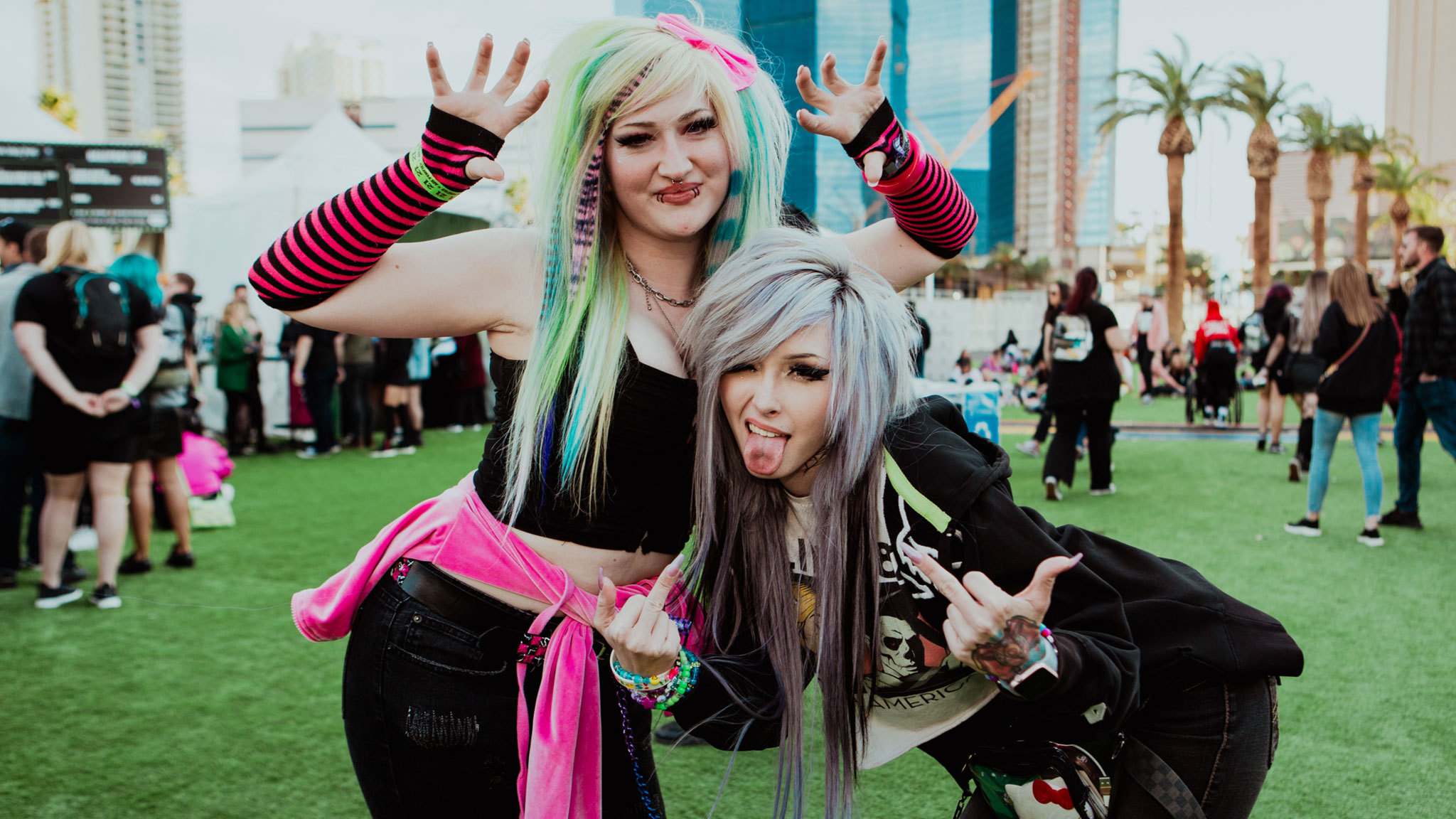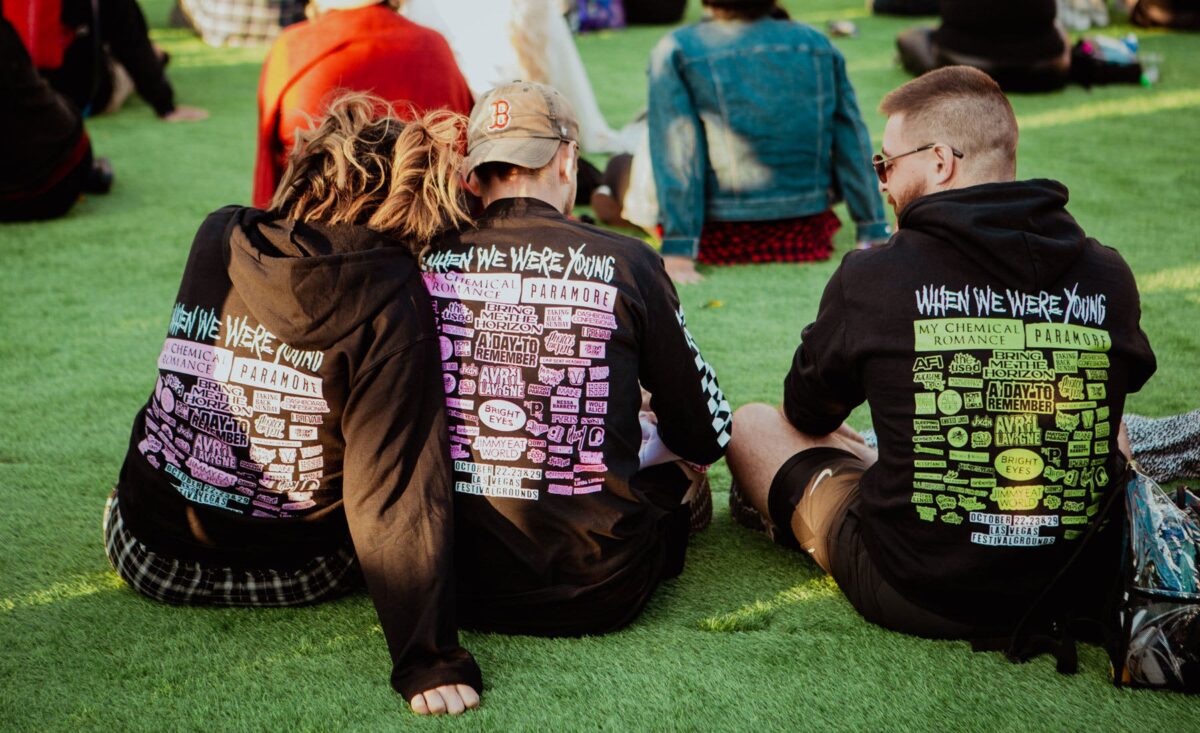What’s the easiest way to make a buck? To cash in on people’s nostalgia of course. The live music industry was decimated from 2020 to 2021. So much so that, when festivals made their return this year, if it seemed like prices were multiplied 1.5 times, well, it’s because they were. The live music industry took such a hit in the last two years that it’s trying to quickly re-find its footing and push its finances back into the green. But doing so won’t come with originality or innovation.
The “nostalgia” festival circuit is nothing new to the industry, or at least not to Southern California, with a sleuth of revival festivals popping up just before the pandemic (see Cruel World Festival or Just Like Heaven). And given LA’s dearth of alternative music festivals, the city proved to be fertile breeding ground for Goldenvoice and Live Nation to recoup their finances from the past two years.
The first round of nostalgia festivals seemed to be spearheaded by This Ain’t No Picnic, Goldenvoice’s new alternative crown jewel based in Pasadena. With a lack of indie/alternative festivals in Southern California, after the fall of FYF Fest, a void for perhaps LA’s biggest genre scene was gapingly left open, leaving Goldenvoice (the predominant presence in SoCal, and owners of FYF) to craft a weekend festival that would perfectly fit the previous FYF audience. With a lineup featuring headliners Strokes and LCD Soundsystem, and a reunion from Le Tigre, they quickly picked up where they left off by curating a festival with the cornerstones of the genre.
But perhaps the biggest and most recent nostalgia fest to take place isn’t in Southern California, but Las Vegas. The brand new When You Were Young festival boasted a lineup of bands that hit their peak in 2007: My Chemical Romance, All American Rejects, Paramore, Avril Lavigne, and AFI too name a few. What at first looked like a deliberate cash grab, turned out to be not just that, but a very lucrative cash grab. After selling out in mere hours, a second day was soon added. Then after that sold out, a THIRD day with the same lineup was added. It became so popular that, even before the first installment took place, When You Were Young already announced NEXT year’s lineup and dates (goes to show you how readily available all these acts were).
Other fests have basked in the nostalgia haze as well. Some examples include Smokin Grooves in downtown Los Angeles for classic soul/RnB, Palomino festival in Pasadena for old school country, and of course the hip-hop throwback showcase Rock the Bells. But it’s not just festivals, entire tours with nostalgia acts have been in the works. Summerland Festival reps itself as the “90s alternative rock tour,” featuring bands like Everclear (who founded the festival), Marcy Playground, and other semi-notable acts from the 90s alt-rock, one-hit-wonder craze.

The success of these festivals and tours goes to prove that, just like how there’s a sub-reddit for everything, there’s also a festival for every genre of music, and then sub-genre. Live entertainment groups are now cashing in on already built-in audiences: why take the risk in creating something new and fresh when you know what will already sell and be successful?
But it also prompts the question, do people care if they come off as old? Out of place? Outdated? How far can age actually go? How far back into the past does one have to reach before they’re treading into an audience that won’t even show up and represent? Identity crises are nothing new, but don’t even those nostalgic fests and audiences have an expiration date? One can keep bringing back what used to be in fashion, but how much of the old is too much?
And it goes without saying, that even just relying on nostalgia acts isn’t a guarantee for success. 2022 has had a sleuth of mishaps and unfortunate events as festivals and tours tried to make their comeback this year. Live events are not just raising ticket prices, but are cutting corners in hiring inexperienced staff for cheap, resulting in logistical nightmares in running a festival: long queues, angry festival goers, and a desperate need for strong attendance have tainted many events. Spain’s Primavera is one of the main examples that succumbed to these mishaps this year. In bringing back the festival after a three year hiatus, Primavera not only hiked up ticket prices, but also oversold tickets in an attempt to make their money back from the previous two years, resulting in extreme bottlenecking with large crowds in tight spaces with low-paying staff.
But event logistics aren’t the only things making tours and festivals unreliable this year. In addition to artists still contracting COVID, one just simply can’t predict the laws of nature. Las Vegas’ When You Were Young festival had to cancel its first day due to extreme winds, while the long-awaited Rage Against the Machine reunion had to be cancelled after vocalist Zach de la Rocha tore his ACL just a few shows in.
Needless to say, this business model of banking on nostalgia is only a phase. People will only be able to take so much of the past that it’ll eventually dilute itself, until the point where audiences need something fresh. Festivals are now in a tug of war with themselves between banking on what is reliably successful, and what is new, cool and innovative. It’s one thing to be “cool,” but to be cool AND successful? That’s nearly impossible.
But are nostalgia festivals here to stay? As long as audiences like to remain in their comfort zones, absolutely. Nostalgia will always have an audience. But will that take away incentive to fund new, innovative festivals for growing audiences? Absolutely not. Perhaps the next generation of festival goers will be ones that actively challenge themselves, that go against habits like leaning on nostalgia as a crutch, and learn to embrace the constantly changing live music landscape.
Featured photos courtesy of Jenn Five/Kerrang
